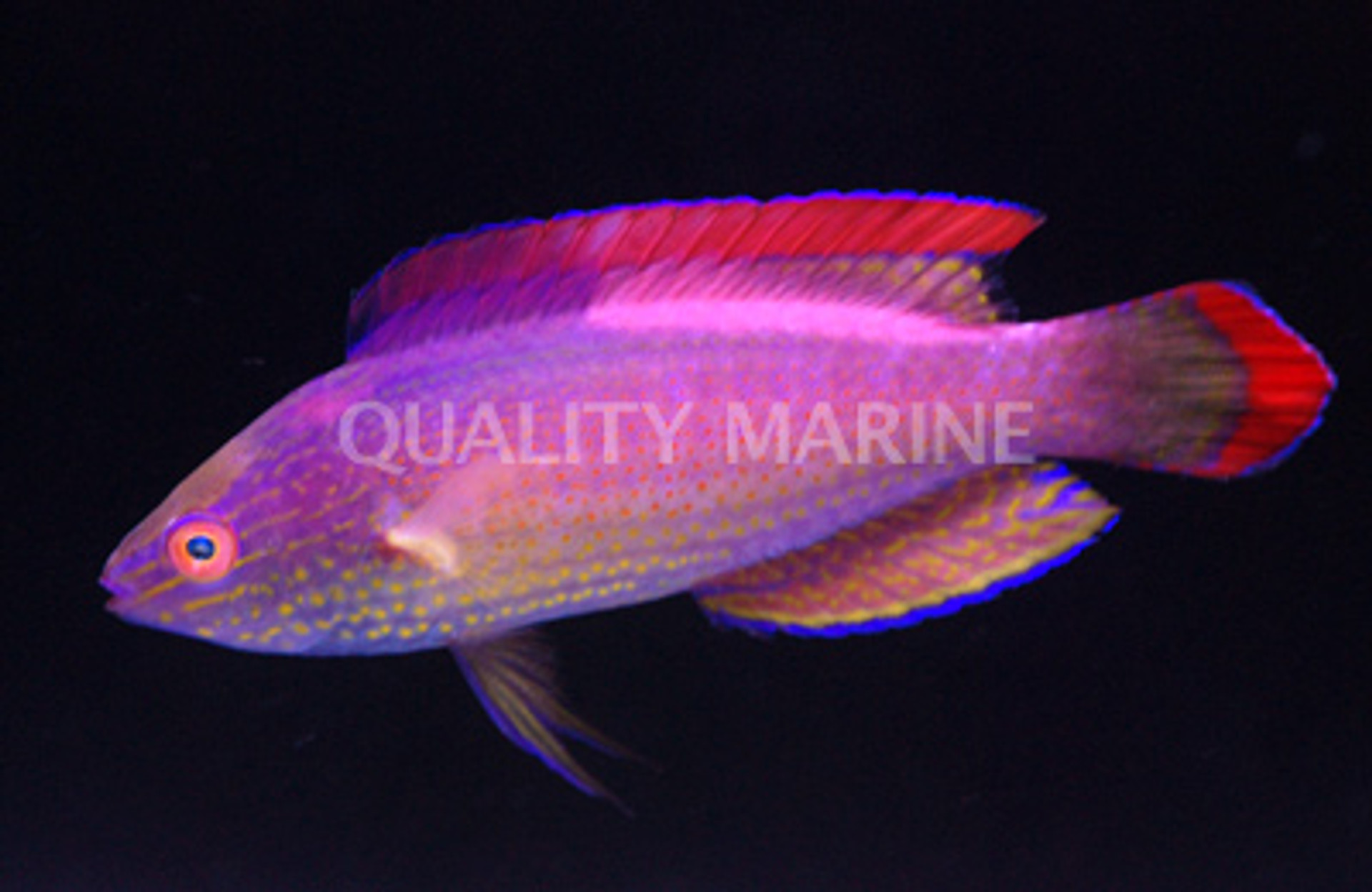Pink Margin Fairy Wrasse (Cirrhilabrus rubrimarginatus)

Cirrhilabrus is home to some of the most colorful and revered reef-safe fishes within the aquarium trade, but the group also has plenty of lesser-known gems worth taking a look at. The Pink Margin Fairy Wrasse could be considered one of these underappreciated species. It tends not to attract the same level of admiration as, say, a Flame Wrasse (C. jordani) or a Lineatus Wrasse (C. lineatus), but a mature male of C. rubrimarginatus is every bit as colorful as its more esteemed cousins.
Part of the problem is that collecting a male in its vibrant terminal coloration is quite a challenge. Juveniles and females occur in shallower depths and naturally outnumber the males by a wide margin (the fishes of this genus are, after all, haremic protogynous hermaphrodites). The breeding adults tend to only become common below 30-40 meters or so, putting them in the same upper mesophotic depths as rarities like C. earlei or C. lunulatus.
Small juveniles are fairly uncommon in aquariums, but theyre rather attractive by Cirrhilabrus standards, having a pink body and yellow throughout the dorsal fin and upper portions of the head. Females and subterminal males are the most widely available. These largely maintain the pink and yellow appearance of the juveniles, while slowly developing the namesake red margin found in both the dorsal and caudal fins.
Terminal males dont differ from the females in quite the same dramatic fashion as others from this genus. The body is still largely pink and the fins are still margined in red, but many other secondary sexual details develop. The scales along the sides of the body become covered in red dots, and the face becomes increasingly patterned with contrasting yellow lines and dashes. We see the same sort of markings in two other close relatives, C. lineatus and C. rhomboidalis, and, additionally, these three species also possess greatly enlarged pelvic fins.

Male fairy wrasses are often able to flash a nuptial coloration to entice females and ward off rival males. In C. rubrimarginatus, the area around the dorsal and anal fins quickly lightens until its nearly white. This can also include the red portions of the caudal fin and areas around the belly. And there can also be a pinkish or orangish band present along the back. It becomes difficult to accurately describe all of the many details that make the males of this species so overwhelmingly attractive. This is definitely an instance where a picture really is worth a thousand words.
Youll find this fairy wrasse across the West Pacific, from Japan to Bali to Fiji. Throughout this broad distribution, there seems to be little, if any, regional differentiation in the color patterning, though this has not been studied in much detail as of yet. This is in contrast to every other Cirrhilabrus group found across this region, which otherwise all have distinctive regional species (whether they be formally described or not).
Attaining a maximum size of around 5 inches, youll want to house the Pink Margin Fairy Wrasse in a suitably large aquarium. It can potentially bully other smaller members from its genus, though most will get along fine when provided with enough space and hardscape to explore.